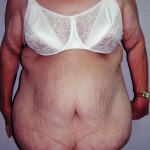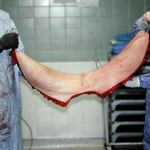
Panniculectomy surgery is a reconstructive procedure performed to remove a panniculus, sometimes referred to as a pannus or overhanging abdominal apron. The pannus frequently contributes to a number of health problems, including chronic wounds and skin infections due to the moisture underneath the skin folds.

While removal of a massive abdominal pannus solved a few health problems for the very obese patient, it did little for their general well-being or improve longevity. Along came bariatric surgery and we have seen a fortunate change in the large abdominal pannus patient. As bariatric surgery has helped patients lose a lot of weight, so has the size of abdominal pannuses decreased. Most abdominal pannuses that I see today are in the bariatric surgery patient or someone that has lost over 100m lbs. on their own.
These sizes of abdominal pannuses are much more manageable, have fewer complications after their removal, and the patients are overall much healthier. The typical pannus that is removed today, often part of a circumferential lower body lift, weighs 10 lbs. or less. Such abdominal pannuses are a welcome sight from those large ones in the past.
Dr. Barry Eppley
Indianapolis, Indiana


